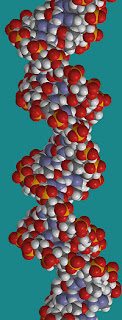EGG IN BOTTLE
The egg in a bottle demonstration is an easy chemistry or physics
demonstration you can do at home or in the lab. You set an egg on top of a bottle (as pictured). You change the temperature of the air inside the container either by dropping a piece of burning paper into the bottle or by directly heating/cooling the bottle. Air pushes the egg into the bottle.
Egg in a Bottle Materials
- peeled hard-boiled egg (or soft-boiled, if a yolk mess interests you)
- flask or jar with opening slightly smaller than the diameter of the egg
- paper/lighter or very hot water or very cold liquid
In a chemistry lab, this demonstration is most commonly performed using a 250-ml
flask and a medium or large egg. If you are trying this demonstration at home, you can use a glass apple juice bottle. I used a Sobe™ soft drink bottle. If you use too large of an egg, it will get sucked into the bottle, but stuck (resulting in a gooey mess if the egg was soft-boiled). I recommend a medium egg for the Sobe™ bottle. An extra-large egg gets wedged in the bottle.
- Method 1: Set a piece of paper on fire and drop it into the bottle. Set the egg on top of the bottle (small side pointed downward). When the flame goes out, the egg will get pushed into the bottle.
- Method 2: Set the egg on the bottle. Run the bottle under very hot tap water. Warmed air will escape around the egg. Set the bottle on the counter. As it cools, the egg will be pushed into the bottle.
- Method 3: Set the egg on the bottle. Immerse the bottle in a very cold liquid. I have heard of this being done using liquid nitrogen, but that sounds dangerous (could shatter the glass). I recommend trying ice water. The egg is pushed in as the air inside the bottle is chilled.
How It Works
If you just set the egg on the bottle, its diameter is too large for it to slip inside. The pressure of the air inside and outside of the bottle is the same, so the only force that would cause the egg to enter the bottle is gravity. Gravity isn't sufficient to pull the egg inside the bottle.
When you change the temperature of the air inside the bottle, you change the pressure of the air inside the bottle. If you have a constant volume of air and heat it, the pressure of the air increases. If you cool the air, the pressure decreases. If you can lower the pressure inside the bottle enough, the air pressure outside the bottle will push the egg into the container.
It's easy to see how the pressure changes when you chill the bottle, but why is the egg pushed into the bottle when heat is applied? When you drop burning paper into the bottle, the paper will burn until the oxygen is consumed (or the paper is consumed, whichever comes first). Combustion heats the air in the bottle, increasing the air pressure. The heated air pushes the egg out of the way, making it appear to jump on the mouth of the bottle. As the air cools, the egg settles down and seals the mouth of the bottle. Now there is less air in the bottle than when you started, so it exerts less pressure. When the temperature inside and outside the bottle is the same, there is enough positive pressure outside the bottle to push the egg inside.
Heating the bottle produces the same result (and may be easier to do if you can't keep the paper burning long enough to put the egg on the bottle). The bottle and the air are heated. Hot air escapes from the bottle until the pressure both inside and outside the bottle is the same. As the bottle and air inside continue to cool, a pressure gradient builds, so the egg is pushed into the bottle.
How to Get the Egg Out
You can get the egg out by increasing the pressure inside the bottle so that it is higher than the pressure of the air outside of the bottle. Roll the egg around so it is situated with the small end resting in the mouth of the bottle. Tilt the bottle just enough so you can blow air inside the bottle. Roll the egg over the opening before you take your mouth away. Hold the bottle upside down and watch the egg 'fall' out of the bottle. Alternatively, you can apply negative pressure to the bottle by sucking the air out, but then you risk choking on an egg, so that's not a good plan.



